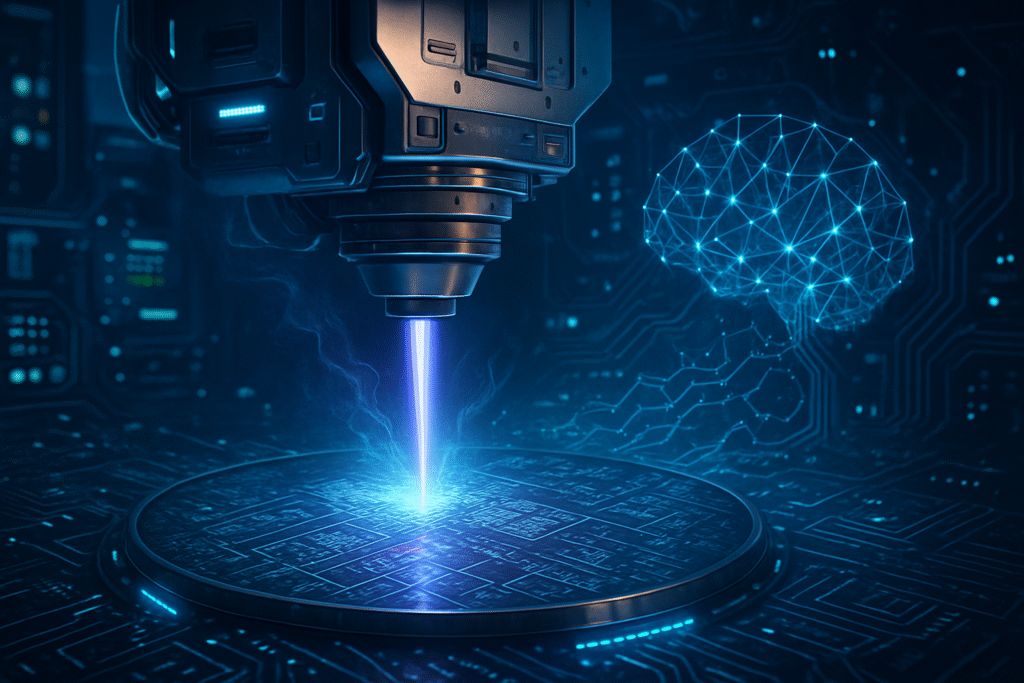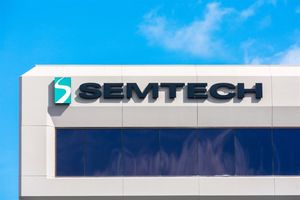
As artificial intelligence continues its relentless march, pushing the boundaries of computation and innovation, one company stands as an indispensable, yet often unseen, linchpin: ASML Holding N.V. (ASML: NASDAQ/AMS). The Dutch technology giant, renowned for its cutting-edge lithography systems, is not merely a beneficiary of the AI boom but its fundamental enabler. As of late 2025, a compelling bull case for ASML is solidifying, driven by its near-monopoly in Extreme Ultraviolet (EUV) technology, the rapid adoption of its next-generation High Numerical Aperture (High-NA) EUV systems, and insatiable demand from global chipmakers scrambling to build the infrastructure for the AI era.
The investment narrative for ASML is intrinsically linked to the future of AI. The exponentially increasing computational demands of advanced AI systems, from large language models to complex neural networks, necessitate ever-smaller, more powerful, and energy-efficient semiconductors. ASML’s sophisticated machinery is the only game in town capable of printing the intricate patterns required for these state-of-the-art chips, making it a critical bottleneck-breaker in the semiconductor supply chain. With AI chips projected to constitute a significant portion of the burgeoning semiconductor market, ASML's position as the primary architect of advanced silicon ensures its continued, pivotal role in shaping the technological landscape.
The Precision Engineering Powering AI's Evolution
At the heart of ASML's dominance lies its groundbreaking lithography technology, particularly Extreme Ultraviolet (EUV). Unlike previous Deep Ultraviolet (DUV) systems, EUV utilizes a much shorter wavelength of light (13.5 nanometers), allowing for the printing of significantly finer patterns on silicon wafers. This unprecedented precision is paramount for creating the dense transistor layouts found in modern CPUs, GPUs, and specialized AI accelerators, enabling the manufacturing of chips with geometries below 5 nanometers where traditional DUV lithography simply cannot compete. ASML's near-monopoly in this critical segment makes it an indispensable partner for the world's leading chip manufacturers, with the EUV lithography market alone projected to generate close to $175 billion in annual revenue by 2035.
Further solidifying its technological lead, ASML is pioneering High Numerical Aperture (High-NA) EUV. This next-generation technology enhances resolution by increasing the numerical aperture from 0.33 to 0.55, promising even finer resolutions of 8 nm and the ability to carve features roughly 1.7 times finer. This leap in precision translates to nearly threefold transistor density gains, pushing the boundaries of Moore's Law well into the sub-2nm era. ASML recognized its first revenue from a High-NA EUV system in Q3 2025, marking a significant milestone in its deployment. The full introduction and widespread adoption of High-NA EUV lithography are considered the most significant advancements in semiconductor manufacturing from the present to 2028, directly enabling the next wave of AI innovation.
These advancements represent a fundamental shift from previous manufacturing approaches, where multi-patterning with DUV tools became increasingly complex and costly for advanced nodes. EUV, and now High-NA EUV, simplify the manufacturing process for leading-edge chips while dramatically improving density and performance. Initial reactions from the AI research community and industry experts have underscored the critical nature of ASML's technology, recognizing it as the foundational layer upon which future AI breakthroughs will be built. Without ASML's continuous innovation, the physical limits of silicon would severely constrain the growth and capabilities of AI.
Strategic Imperatives: How ASML Shapes the AI Competitive Landscape
The profound technical capabilities of ASML's equipment have direct and significant implications for AI companies, tech giants, and startups alike. Companies that gain early access to and mastery of chips produced with ASML's advanced EUV and High-NA EUV systems stand to benefit immensely, securing a crucial competitive edge in the race for AI dominance. Major chipmakers, acting as the primary customers, are heavily reliant on ASML's technology to produce the cutting-edge semiconductors powering the burgeoning AI infrastructure.
Intel (INTC: NASDAQ), for instance, has been an early and aggressive adopter of High-NA EUV, deploying prototype systems and having received ASML's first 0.55 NA scanner. Intel has expanded its High-NA EUV orders as it accelerates work on its 14A process, scheduled for risk production in 2027 and volume manufacturing in 2028. Early feedback from Intel has been positive, with reports of exposing over 30,000 wafers in a single quarter using the High-NA tool, resulting in a significant reduction in process steps. This strategic investment positions Intel to regain its leadership in process technology, directly impacting its ability to produce competitive CPUs and AI accelerators.
Samsung (005930: KRX) is also making aggressive investments in next-generation chipmaking equipment to close the gap with rivals. Samsung is slated to receive ASML’s High-NA EUV machines (TWINSCAN EXE:5200B) by mid-2026 for their 2nm and advanced DRAM production, with plans to deploy these tools for its own Exynos 2600 processor and potentially for Tesla’s (TSLA: NASDAQ) next-generation AI hardware. This demonstrates how ASML's technology directly influences the capabilities of AI chips developed by tech giants for their internal use and for external clients.
While TSMC (TSM: NYSE), the world's largest contract chipmaker, is reportedly cautious about adopting High-NA EUV for mass production of 1.4nm due to its significant cost (approximately $400 million per machine), it continues to be a major customer for ASML's standard EUV systems, with plans to purchase 30 EUV machines by 2027 for its 1.4nm facility. TSMC is also accelerating the introduction of cutting-edge processes in its US fabs using ASML's advanced EUV tools. This highlights the competitive implications: while leading-edge foundries are all ASML customers, their adoption strategies for the very latest technologies can create subtle but significant differences in their market positioning and ability to serve the most demanding AI clients. ASML's technology thus acts as a gatekeeper for advanced AI hardware development, directly influencing the competitive dynamics among the world's most powerful tech companies.
ASML's Pivotal Role in the Broader AI Landscape
ASML's trajectory is not merely a story of corporate success; it is a narrative deeply interwoven with the broader AI landscape and the relentless pursuit of computational power. Its lithography systems are the foundational bedrock upon which the entire AI ecosystem rests. Without the ability to continually shrink transistors and increase chip density, the processing capabilities required for training increasingly complex large language models, developing sophisticated autonomous systems, and enabling real-time AI inference at the edge would simply be unattainable. ASML’s innovations extend Moore’s Law, pushing back the physical limits of silicon and allowing AI to flourish.
The impact of ASML's technology extends beyond raw processing power. More efficient chip manufacturing directly translates to lower power consumption for AI workloads, a critical factor as the energy footprint of AI data centers becomes a growing concern. By enabling denser, more efficient chips, ASML contributes to making AI more sustainable. Potential concerns, however, include geopolitical risks, given the strategic importance of semiconductor manufacturing and ASML's unique position. Export controls and trade tensions could impact ASML's ability to serve certain markets, though its global diversification and strong demand from advanced economies currently mitigate some of these risks.
Comparing ASML's current role to previous AI milestones, its contributions are as fundamental as the invention of the transistor itself or the development of modern neural networks. While others innovate at the software and architectural layers, ASML provides the essential hardware foundation. Its advancements are not just incremental improvements; they are breakthroughs that redefine what is physically possible in semiconductor manufacturing, directly enabling the exponential growth seen in AI capabilities. The sheer cost and complexity of developing and maintaining EUV and High-NA EUV technology mean that ASML's competitive moat is virtually unassailable, ensuring its continued strategic importance.
The Horizon: High-NA EUV and Beyond
Looking ahead, ASML's roadmap promises even more transformative developments that will continue to shape the future of AI. The near-term focus remains on the widespread deployment and optimization of High-NA EUV technology. As Intel, Samsung, and eventually TSMC, integrate these systems into their production lines over the coming years, we can expect a new generation of AI chips with unprecedented density and performance. These chips will enable even larger and more sophisticated AI models, faster training times, and more powerful edge AI devices, pushing the boundaries of what AI can achieve in areas like autonomous vehicles, advanced robotics, and personalized medicine.
Beyond High-NA EUV, ASML is already exploring "Hyper-NA EUV" and other advanced lithography concepts for the post-2028 era, aiming to extend Moore's Law even further. These future developments will be crucial for enabling sub-1nm process nodes, unlocking entirely new application spaces for AI that are currently unimaginable. Challenges that need to be addressed include the immense cost of these advanced systems, the increasing complexity of manufacturing, and the need for a highly skilled workforce to operate and maintain them. Furthermore, the integration of AI and machine learning into ASML's own manufacturing processes is expected to revolutionize optimization, predictive maintenance, and real-time adjustments, unlocking new levels of precision and speed.
Experts predict that ASML's continuous innovation will solidify its role as the gatekeeper of advanced silicon, ensuring that the physical limits of computing do not impede AI's progress. The company's strategic partnership with Mistral AI, aimed at enhancing its software capabilities for precision and speed in product offerings, underscores its commitment to integrating AI into its own operations. What will happen next is a continuous cycle of innovation: ASML develops more advanced tools, chipmakers produce more powerful AI chips, and AI developers create more groundbreaking applications, further fueling demand for ASML's technology.
ASML: The Indispensable Foundation of the AI Revolution
In summary, ASML Holding N.V. is not just a leading equipment supplier; it is the indispensable foundation upon which the entire AI revolution is being built. Its near-monopoly in EUV lithography and its pioneering work in High-NA EUV technology are critical enablers for the advanced semiconductors that power everything from cloud-based AI data centers to cutting-edge edge devices. The bull case for ASML is robust, driven by relentless demand from major chipmakers like Intel, Samsung, and TSMC, all vying for supremacy in the AI era.
This development's significance in AI history cannot be overstated. ASML's innovations are directly extending Moore's Law, allowing for the continuous scaling of computational power that is essential for AI's exponential growth. Without ASML, the advancements we see in large language models, computer vision, and autonomous systems would be severely curtailed. The company’s strong financial performance, impressive long-term growth forecasts, and continuous innovation pipeline underscore its strategic importance and formidable competitive advantage.
In the coming weeks and months, investors and industry observers should watch for further updates on High-NA EUV deployments, particularly from TSMC's adoption strategy, as well as any geopolitical developments that could impact global semiconductor supply chains. ASML’s role as the silent, yet most powerful, architect of the AI future remains unchallenged, making it a critical bellwether for the entire technology sector.
This content is intended for informational purposes only and represents analysis of current AI developments.
TokenRing AI delivers enterprise-grade solutions for multi-agent AI workflow orchestration, AI-powered development tools, and seamless remote collaboration platforms.
For more information, visit https://www.tokenring.ai/.


















